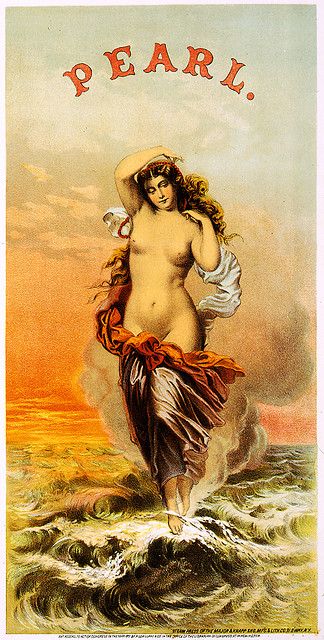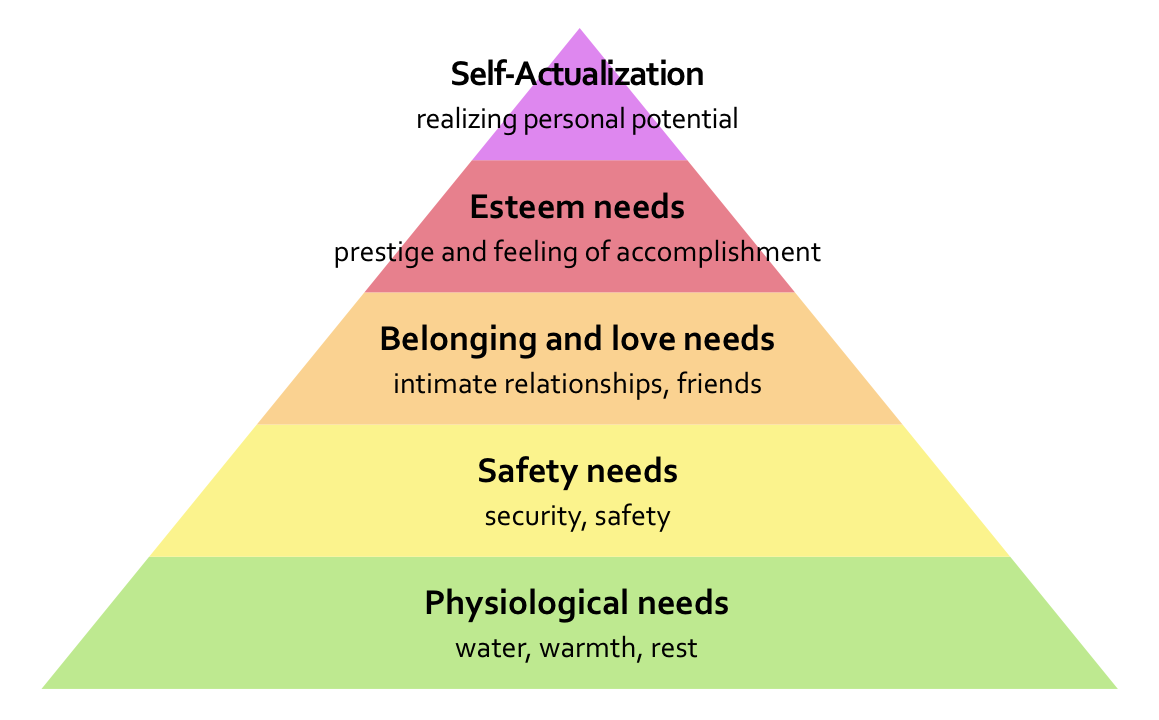Sex sells…
…or does it?
You’ve probably heard the expression a thousand times, and even become conditioned to believe it, but does this age-old strategy still hold true in the digital age?
I’m pretty sure I’ve got the answer, but before we get to all the juicy-divisive stuff, let’s delve into the beginnings of sex in marketing.
The first large scale appearance occurred in 1871, courtesy of another opinion splitting industry, tobacco. Pearl Tobacco produced packaging with images of a naked female on the front.
Here it is:

It’s hard to believe -from a digital-age perspective, that this would have any effects (we’ll come back to this point in a minute), but it did, grabbing attention and making them one of the biggest names in the industry.
Another tobacco company, W. Duke & Sons followed suit in 1885 by inserting trading cards into their product, of actresses posing in erotic positions. The campaign increased their revenue and made them one of the leaders in the tobacco industry.
And the rest, as they say, is history…
…from food to perfume, clothing to gadgets, almost every industry has followed the line ‘sex sells’ in marketing and nearly all of them have made it work.
And there’s good reason for it, a plethora of psychological theories claim that sex ALWAYS affects our decision-making process. Freud believed our every action is stemmed from two drives, life (driven by sex) and death (driven by violence). Behaviourists argue that sex is a primary reinforcer alongside hunger and comfort…
…and even the humanistic Hierarchy of Needs theory developed by Maslow, places sex as a fundamental need (intimacy):

These psychological theories are both acclaimed and criticised, so we should not accept their results as gospel, but…
…for now, let’s (loosely) accept the principle that sex DOES affect our subconscious monkey-brains, and consider the reason that sex might not be as effective as it once was:
The modern age.
In this crazy, ultra-high-speed world, we’re able to discover almost anything with just the click of a few buttons, and sex is no exception.
Nudity, pornography, semi-naked celebrities, you name it, you can have it. These are as readily available as bananas from a greengrocer, and it’s had a knock-on effect on marketing and advertising practices worldwide.
Look back at that Pearl Tobacco image…are you shocked? Does it startle you? Does it have any sexual effects on you, whatsoever?
Probably not, and that’s because the digital age has desensitised you.
A Sexual Impasse
As the (seemingly) timeless technique of sex in marketing draws into a new age of consumers, there are plenty of different opinions about the strategy that bring us to an interesting crossroads.
When performing research for this article, I was driven near-crazy with differing viewpoints and arguments, and it’s only by reading them all, revisiting studies and stepping back, that I was able to come to a balanced opinion.
If you’re interested to know what EVERYONE is saying, they tend to stick to one of these 5 (general) guidelines:
- -Sex sells in marketing
- -Sex doesn’t sell (anymore)
- -Sex sells, but only to men
- -Sex in advertising is offensive and should be stopped, regardless if it sells or not
- -Sex creates memorable adverts, but not much else
I’m accustomed to seeing a variety of hooks, angles and viewpoints in opinion-based content, but rarely have I seen anything as polarising as this subject.
The unsinkable ship that is sex in advertising, seems to have struck an iceberg, but it’s not just our desensitisation that’s caused this, there are two other BIG ISSUES that might bring it down.
Relatability
On the other side of this blog is not a man with perfect skin, flowing hair, a chiselled six-pack and a seemingly airbrushed body (yet!)…
…does that make you feel uncomfortable? Or does it comfort you to know, that just like you, I’m not perfect?
Digital advertising has given marketers the opportunity to target their audience down to ridiculously niche levels…
…and elevated the importance of RELATABILITY.
Seeing a photoshopped image of a (already very attractive) supermodel, WAS an effective technique, demonstrating to potential buyers exactly what they could have if they bought the product…
…but now, audiences are smarter, they’ve become savvy to these sexually motivated strategies, and it actually makes them feel distanced, and completely unrelated to the advertising brand.
Abercombie & Fitch are just one brand who’ve noticed this change. The clothing company were known for using highly-sexual ads to promote their products, but have recently changed their policy, stating in a news release, “…there will no longer be sexualized marketing used in marketing materials, including in-store photos, gift cards and shopping cards…”
Going from this:

To This:

This marketing strategy bucked a trend of quarter after quarter losses for the company, and contributed to a 5% growth in net sales (in the quarter following the changes)…
…but, before we decide that’s it and chuck sexually driven ads in the bin, please cast your mind back to the last time you saw an unattractive person in an advert…
…I’m pretty sure that you’re struggling for examples, and that’s because we are conditioned to accept attractive people as our preferred selling mediums.
Does anybody in that Abercombie and Fitch advert look unattractive to you? Are the actors in toothpaste adverts hideously ugly? How about the characters in the latest beer commercial you saw?
These are all examples of relatable attractiveness, that WORK. Proving that sex can tackle the relatability problem, when done correctly.
Offensive
As human beings, we’re always looking to push the boundaries of what is acceptable, and sometimes, the boundary gets pushed back.
Before we go any deeper, check out this advert from Jimmy Choo that was released and then pulled following heavy criticism at the turn of 2018:
Videos and images that run with themes like this are so common in beauty and fashion, that it’s almost become an industry standard…
…but, the world is changing and more voices are having their say (and rightly so!)
This advert was released shortly after the #metoo movement, bringing together victims and denouncing sexual assault and the harassment of women.
Jimmy Choo’s ad came under heavy scrutiny for indoctrinating the belief that “the most important thing women have to offer is their appearance” and being “sexual objects”.
The mixture of a beautiful, scantily clad woman walking through the night under a constant male glare, was one step too far in the ever-evolving digital world. And there are signs that these steps are being pushed back. What was acceptable (in the opinions of advertisers), has now become offensive. As the list of reasons to ban ads grows every year.
Many of you will remember the Calvin Klein ad campaigns in the early 80s. They featured a 16 year-old Brooke Shields, in a number of short minimalist videos. In the most famous of which, the underage model said, “You want to know what gets between me and my Calvin’s? Nothing.”
Would an ad like that make it today? And, what would the general public think of it?
I’ll let you formulate your own opinions…
…and in the meantime, demonstrate the much more stringent advertising restrictions, by comparing that Calvin Klein campaign, to a marketing poster that was banned in 2014 for being too ‘sexually suggestive’.
The poster, promoting Rogue perfume, features an almost-naked Rhianna, pressing a pair of high-heels against an oversized replica of the product, but…
…unlike the other adverts, I’m not going to show you that one.
Why?
I want to prove an unescapable point.
Now that you know the poster was banned, you’re MUCH MORE LIKELY to seek it out, in fact, I bet some of you have already.
This affect can actually turn OFFENSIVE, BANNED material into viral-like digital content, encouraging advertisers to create sexualised adverts for brands who want to be seen as daring, rebellious and risqué.
Simply search ‘banned commercials’ on YouTube, and you’ll see exactly what I’m getting at. These adverts are so sexually over-the-top, that the producers must have known they’d be banned.
Being banned creates intrigue, just ask the authors of To Kill a Mockingbird, 1984, The Catcher in the Rye, or songwriters like The Beatles…
…because they all had titles banned that went on to become bestsellers and number 1’s.
Is it Finished?
The evidence is stacking up AGAINST sex still being an effective marketing tool, but hold on…
…we’re not finished yet.
Despite desensitisation, new restrictions and a lack of relatability, the digital world and the next generation of digital shoppers are proving that sex certainly does still have a place in marketing.
To help me explain, I’m going to tell you about something I witnessed during a recent holiday to the Greek isle of Mykonos.
I was sitting at a restaurant right at the edge of the sea. The waves were lapping against the shore, the sun was setting and a row of houses that protrude over the ocean named ‘Little Venice’ gleamed to my right.

And then, as if from nowhere, a group of women came right into the middle of my view and began applying make-up, beautifying their hair and asking each other for advice.
They spent about fifteen minutes sat on a wall, rigorously perfecting themselves, and for what?
Photos.
Between them, there were 1000’s of different poses and snaps. We’re talking selfies, seductive poses and cameras angled to reveal a little more (if you know what I mean).
So, why would they go to all that effort? And pose in such suggestive ways?
Social Media.
That’s right, it’s never been more important to be seen as attractive, sexy and gain compliments from peers and strangers alike, as it is now.
Marketers are tapping into these avenues too, not just with paid traffic campaigns, but by using INFLUENCERS to reach broad markets.
In other words, a generation are learning that if they can gain followers, likes and shares in abundance, they can earn rewards from them, and what technique are the vast majority using?
Sexuality.
Whether you see it as immoral, or perfectly acceptable, it doesn’t matter. Influencer marketing is growing, and it’s working.
According to Neilsen, 84% of consumers worldwide are more likely to take action because of recommendations from trusted sources, than any other form of advertising. Influencer marketing ticks a huge box in this area, because people are actively choosing to follow these influencers.
This type of campaign has huge benefits for marketers. They are targeted, avoid adblockers, penetrate concentrated segments of the market and utilise a range of social channels.
If we study the most popular users on the world’s biggest social media platforms, it’s clear to see a trend towards attractive, sexually-desirable people:
Twitter-
- Katy Perry
- Justin Bieber
Instagram-
- Selena Gomez
- Cristiano Ronaldo
Facebook-
- Cristiano Ronaldo
- Shakira
These celebrities are social media role models, demonstrating exactly what is and isn’t acceptable to vast audiences…
…effectively proving that sex can still sell.
Objectification vs. Objection

‘Sex sells’ in marketing has become a conundrum. In one hand we are encouraged to be our most beautiful, to share more of our lives and look up to people who use sex to their advantage…
…and in the other, we’re told to restrict our thoughts, not to objectify the opposite sex and tread an increasingly politically-correct line.
And this is what has caused such a conflict of opinion about sex in marketing.
Should we use it or not? Does it work or doesn’t it?
We live in a world where we are able to see explicit content at the click of a button, swipe left or right to judge somebody’s attractiveness and reward people for sharing their good looks…
…before chastising them for showing too much of it.
A Long Running Study
In order for you to come to a clear conclusion I’ve tried to demonstrate both sides of the ‘sex sells’ coin, but before I wrap this up with my opinion, there’s one more nugget to consider.
While looking for studies or psychological research, I’ve come across all sorts of bizarre information, including analysis of the ‘lizard brain’ inside humans and an experiment that involved showing sexually stimulating images to monkeys…
…but, by far the most in-depth study into ‘sex sells’ in marketing was undertaken at the University of Illinois by Professor John Wirtz. It included 78 peer-reviewed studies and an average of 225 participants in each individual test.
The results may not be what some of you are expecting.
The study concluded that sex appeal has “zero effect on participants intention to buy products” and, “there’s no indication that there’s a positive effect.”
But, they did discover that people “remember ads with sexual appeals more than those without, but that effect doesn’t extend to the brands or products that are featured in the ads.”
And perhaps unsurprisingly, “males, on average, like ads with sexual appeals, and females dislike them.”
These results hold scientific truths about the old adage ‘sex sells’ in marketing, but is it enough to break-the-back of historical marketing successes or a society conditioned to respond to attractive people?
The Bottom Line
Right, that’s enough conjecture, let’s get down to it.
In my opinion, sex does sell, but only under certain conditions.
The world has changed. People are smarter, savvier and much more desensitised when it comes to sexually charged advertising.
Sex will continue to sell provided it is relatable or aspirational and is channelled through the correct mediums at a targeted audience.
There is too long a history of success for me to think otherwise. If sexually suggestive advertising techniques didn’t work, why have so many companies run with them for so long? And why do they continue to do so?
The same crossroads has appeared in other advertising techniques throughout the years, leading to tactical and strategic evolutions, and it’s no different here. Sexual marketing content styles used in the 80’s, 90’s and 00’s will only create offense or complete apathy in their audience.
We have come to a difficult crossroads with the strategy, and after reading, researching and analysing data and opinion, it’s clear to see that this will not end any time soon.
Sex in marketing can easily offend and is often completely unnecessary…
…but, that’s not to say it doesn’t work, and won’t continue to do so.
Social media has proven that the majority of us want to be the most attractive, popular and sexually-desirable version of ourselves, and if marketing is able to harness that in a relatable, non-offensive way…
…then I’m all for it.
Before I ask for your opinion on the strategy, I’d like to share my favourite advert in this category…
…hopefully you’ll see that sex in advertising doesn’t have to be serious, seedy or offensive.
What do you think of modern advertising? Is there space for sexualised strategies? Share your thoughts with our audience!
If you enjoyed this post, check out Is More Traffic Really a Good Thing?
- Author Details




